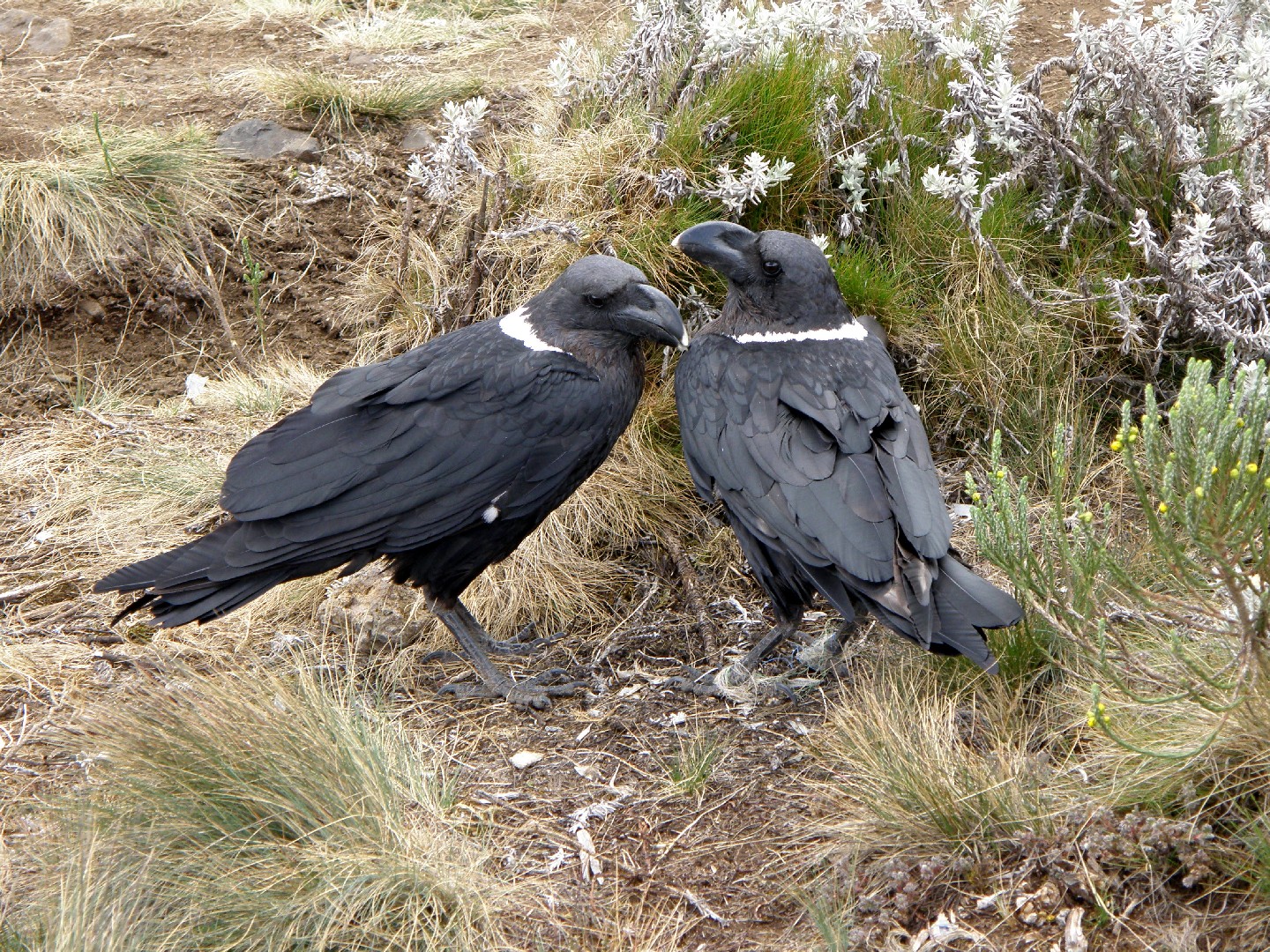White-necked Raven
A species of Crows Scientific name : Corvus albicollis Genus : Crows
White-necked Raven, A species of Crows
Botanical name: Corvus albicollis
Genus: Crows
Content
Description People often ask General Info
 Photo By Jjgodox , used under CC-BY-SA-4.0 /Cropped and compressed from original
Photo By Jjgodox , used under CC-BY-SA-4.0 /Cropped and compressed from original Description
The white-necked raven has a much shorter tail than the common raven, as well as a deeper bill with a white tip that is almost as strongly arched as that of the thick-billed raven. Though predominantly black, the throat, breast and neck show a faint purple gloss. There is a large patch of white feathers on the nape of the neck. Soars well with shallower wingbeats than other Corvidae. 
Size
56 cm
Nest Placement
Tree
Feeding Habits
White-necked Raven consumes a diverse diet, ranging from insects to vertebrates and plant material. Feeding behaviors include scavenging, hunting, foraging on the ground or in foliage, and clever tactics like dropping tortoises to break shells. White-necked Raven partakes in communal roosting and may exhibit playful aerial behaviors.
Habitat
White-necked Raven primarily occupies hilly and mountainous regions, thriving in open landscapes with rugged terrain, such as grasslands and gorges, as well as open hill forests. Although it prefers elevations between 1000 m and 3000 m, white-necked Raven is adaptable and can also be seen from sea level in the southernmost parts of its range to heights of 5800 m in northeastern areas. This species is not averse to human settlements and can be spotted around small towns and villages near its natural roosting and nesting sites.
Dite type
Omnivorous
People often ask
General Info
Feeding Habits
Bird food type
Behavior
Most of this bird's food is obtained from the ground, but it will take food from trees as well. It has been seen to drop a tortoise from a height on to hard ground, preferably on rocks, and then swoop down to eat it, or even pick it up again if not sufficiently broken. White-necked ravens will also readily take carrion from road kills. Fruit, grain, insects, small reptiles, peanuts and human food are also readily taken and the bird forages in back yards and gardens quite openly. Like all or most raven species, the White-necked raven form flocks after leaving their parents and once fully matured will pair off and form territories. It is often found in the company of other scavengers such as kites or vultures. Nests are bowls of sticks lined with grass, hair, and wool, found mainly on cliff ledges but occasionally found in trees. There are usually 3-5 eggs laid. 
Distribution Area
It occurs in eastern and southern Africa in open, mountainous country. It is quite commonly found in small towns and villages as long as there are mountains or hills for roosting and nesting relatively nearby. 
Species Status
Not globally threatened.
Scientific Classification
Phylum
Chordates Class
Birds Order
Perching birds Family
Crows and jays Genus
Crows Species
White-necked Raven